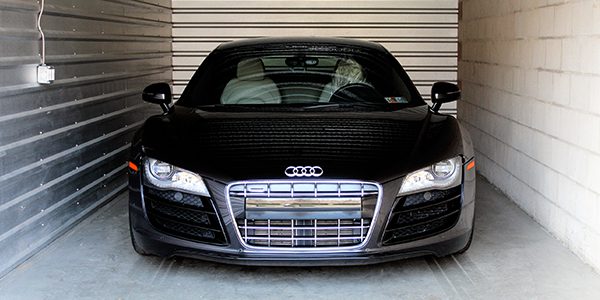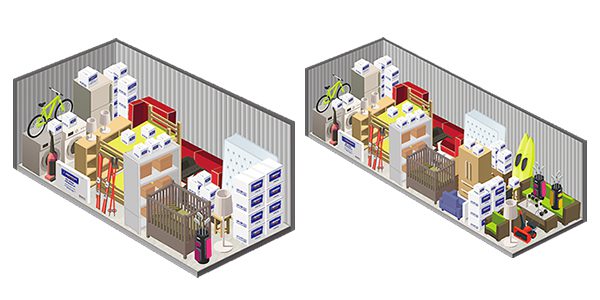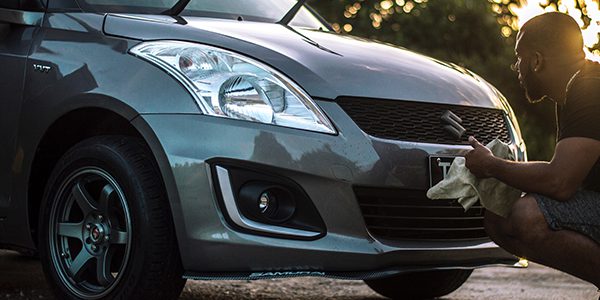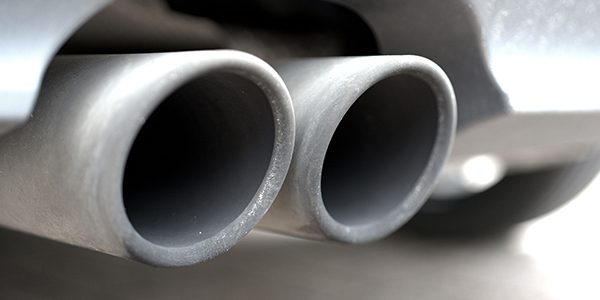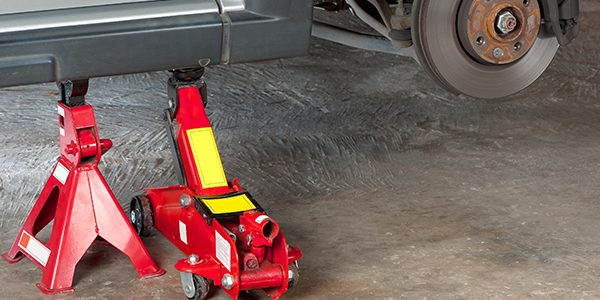How to Store a Car in a Storage Unit
Shift into Storage: Protecting Your Car the Right Way
Your car is one of the most valuable items you own. Whether you are looking for a car storage unit to clear up space in your garage, protect your car during the winter, or you’re going away for an extended period of time, you want to keep your car safe. In addition to providing more space at home, using a storage unit allows you to keep your car in a secure, weather-controlled environment. Unlike parking outside or in an open garage, a storage unit offers superior protection against weather-related damage, such as rust or paint deterioration. It’s important to know how to properly store your car to avoid causing damage. Following these important steps will help keep your car in working condition no matter how long you plan to store it.
Where should I store my car?
If you are storing your car for more than a month, you should look into an indoor car storage option. Many people prefer storage units, as they offer a dark, sealed space with 24/7 security measures. A dedicated car storage unit not only helps maintain your vehicle’s appearance by protecting it from UV rays and dirt but also keeps it safe from potential damage caused by rodents or other pests, which can often find their way into cars stored in less secure spaces. Choosing an indoor storage option ensures that your car remains in optimal condition, free from external factors that could lead to costly repairs.
What do I need to store my car in self storage?
To store your car in a storage unit, it needs to be in running condition. You’ll also need to bring in your registration and proof of ownership. Most storage facilities have strict rules to ensure stored vehicles are legal and safe to avoid potential issues. Having your car’s documents on hand will streamline the storage process and guarantee compliance with the facility’s policies. Additionally, checking that your car insurance covers storage or extended non-use can provide added peace of mind while your vehicle is safely stored away.
Can I work on my car in my storage unit?
No. If you need to work on your car, do so off-site before bringing your car to your storage unit. Storage facilities generally prohibit any vehicle repairs or maintenance within units to ensure safety and cleanliness for all tenants. Performing repairs off-site also helps you avoid potential fines or penalties that might arise from violating the facility’s policies. If you plan to store your car for an extended period, make sure any necessary maintenance, such as oil changes or tire checks, is completed beforehand to keep your car in top condition while stored.
What’s the difference between storing my car in a garage vs. a storage unit?
Storage units are completely sealed, which will protect your car from all outdoor elements. If you are using a reputable storage company, there should also be 24/7 security measures. In a garage, your car will likely be more exposed to the elements and pests from the opening and closing of your garage door.
Additionally, garages often lack the controlled environment provided by storage units, which can expose your car to moisture, dirt, and other contaminants that may cause gradual wear. Your car will also be more at risk of being scratched or bumped in a garage as opposed to a storage unit. Storage units provide a more stable and isolated space, making them ideal for preserving your car’s appearance and functionality over time.
Steps to Storing a Car in a Storage Unit:
1.) Determine What Storage Unit Size You Will Need
Start by measuring your car, making sure to include the side mirrors, as they can significantly affect the width. The majority of standard cars will fit comfortably in a 10×20’ storage unit, which provides ample space for compact cars, sedans, and small SUVs. However, larger vehicles like trucks, full-size SUVs, or vans may require a larger space, such as a 10×30’ storage unit, to allow adequate room for both the car and easy access around it. Taking accurate measurements beforehand ensures you choose the right size, saving you from potentially cramped or overly spacious options.
2.) Fill Your Gas Tank
An empty or partially filled gas tank can lead to unwanted condensation buildup, especially when temperature changes occur in storage. Moisture in the tank can cause rust and corrosion, which can damage both the tank and fuel lines over time. By filling your tank completely before storage, you significantly reduce the air space inside, minimizing condensation risk. A full tank acts as a barrier, keeping moisture at bay and preserving the fuel system, including sensitive seals and gaskets, which can dry out if left exposed for extended periods.
Adding a fuel stabilizer is a crucial step, as it keeps your gasoline from deteriorating and turning stale. Without a stabilizer, fuel can start to break down within a few months, forming gum-like residues that may clog fuel lines and harm engine performance. Stabilized fuel will remain fresh for up to a year, allowing you to start your vehicle easily once you take it out of storage. Taking these precautions ensures that your fuel system and engine remain clean, free from corrosion, and ready to run when you’re ready to hit the road again.
3.) Change Oil and Fluids
Preparing your car’s engine with fresh oil is one of the most important steps before putting it into storage. Over time, oil picks up contaminants, such as metal shavings, dirt, and carbon deposits, which can become harmful to the engine when left stagnant for long periods. By changing the oil before storing your car, you prevent these impurities from settling in the engine, which reduces the risk of internal corrosion and wear. Clean oil provides a protective coating for engine parts, ensuring they remain lubricated and shielded from potential damage when not in use.
If you live in an area with cold winters, it’s essential to top off the antifreeze as well. Antifreeze, or coolant, maintains a stable engine temperature, preventing the engine block from freezing in extremely cold conditions. Without adequate antifreeze, the risk of ice forming within the engine increases, which could lead to cracked engine parts and costly repairs. Additionally, you should consider replacing other essential fluids, such as brake fluid and coolant, which are often overlooked. Brake fluid is hygroscopic, meaning it absorbs moisture from the air over time. This moisture can corrode the braking system, potentially leading to issues like reduced braking performance or even brake failure. Fresh brake fluid helps protect the brake lines and components from rust and other damage, keeping your car’s brakes in good shape while in storage.
Similarly, replacing the coolant ensures that your car’s cooling system remains functional and prevents rust buildup inside the radiator and engine components. Once all necessary fluids have been replaced, it’s a good idea to take your car out for a short drive. This will circulate the new fluids throughout the engine, brake system, and cooling system, ensuring every component is protected. This brief drive distributes the protective qualities of fresh oil, coolant, and brake fluid, so they’re ready to work effectively during storage. Taking these precautions will help maintain your car’s overall health, preventing issues like oxidation, corrosion, and costly mechanical repairs when you’re ready to get back on the road.
4.) Disconnect Your Battery
Taking care of your car’s battery during storage is crucial, as leaving it connected or unattended can lead to issues when you’re ready to start the car again. One option is to remove the battery altogether, which is especially recommended if you live in an area with extremely cold winters. In low temperatures, car batteries are prone to freezing, which can lead to cracks in the casing or leaking, both of which could render the battery unusable. By removing the battery and storing it in a warm, dry location, you ensure it stays protected from the elements, preserving its charge and preventing any risk of damage.
If fully removing the battery isn’t feasible or you prefer not to, a simpler approach is to disconnect it by detaching the negative battery cable. This stops the gradual drain that can occur even when the car is not in use, keeping your battery from losing its charge over time. Disconnecting is a straightforward process and serves as a safe middle ground for maintaining battery health.
Another option, ideal if your storage unit has an electrical outlet, is to use a trickle charger or battery tender. This device keeps your battery at a consistent low-level charge, ensuring it remains powered without risk of overcharging. With a trickle charger, you can leave the battery in the car, as the charger can be connected to the battery and routed out through the engine bay so you can still keep the hood closed. This method keeps the battery active, reducing the chance of it going flat, which is ideal for extended storage periods. However, be sure to check that your storage unit has an accessible power outlet, as not all units provide this feature. Choosing one of these options helps extend the life of your battery, ensuring your car is ready to start without issues when you’re ready to take it out of storage.
5.) Clean and Protect Your Car
Preparing your car for storage starts with a deep, thorough cleaning, both inside and out. Begin by vacuuming the interior, paying special attention to all crevices and under the seats to remove any crumbs or dirt. Food remnants or other organic material, even if small, can attract pests and create unwanted odors over time. Cleaning the interior completely will help ensure your car remains fresh and pest-free while in storage. If you’re steam-cleaning the upholstery, aim to do this at least a few days in advance, giving any residual moisture time to evaporate fully. Lingering moisture can foster mold and mildew, which not only smells bad but can damage fabrics, carpeting, and even the air system. To be extra cautious, consider using moisture-absorbing packets or desiccants inside the car to keep humidity levels low.
Moving to the car’s exterior, a meticulous wash is essential to remove dirt, grime, or road salts that can cling to the paint and lead to corrosion if left for long periods. Start by rinsing the car to remove loose dirt, then use car-specific cleaners to wash each surface thoroughly, including the wheels, trim, and glass. After washing, make sure to dry the entire exterior carefully to prevent water spots, as any trapped moisture could encourage rust or damage during storage.
Once your car is dry, applying a high-quality coat of wax to the paint provides an extra layer of defense against dust, moisture, and minor scratches. The wax acts as a sealant, helping to preserve the paint’s integrity and shine. For the best results, use a microfiber cloth to buff the wax into the surface in small circular motions, creating a smooth, protective layer. In addition, consider treating rubber seals around doors and windows with a conditioning product to prevent them from drying out and cracking, which can be a concern during long-term storage.
Taking the extra step to protect and clean the undercarriage is also wise, particularly if you live in a region where salt is used on the roads. Salt residues can corrode the metal components underneath your car, so a thorough rinse of the undercarriage can help prevent rust and other damage. With your car cleaned, dried, and waxed, you’ll know it’s fully protected and ready to withstand storage without deterioration, ensuring it looks and functions like new when it’s time to take it out again.
6.) Repel Pests
Keeping pests out of your car while in storage is essential to ensure that it remains in top condition. Many reputable storage facilities implement pest control measures, but additional precautions on your part can provide extra security. One simple and effective way to prevent pests, such as mice or insects, from nesting in your car is to place a sock or rag in the exhaust pipe. This blocks one of the primary entry points that small animals often use to crawl inside. Just remember to remove it before starting the car after storage!
Inside the car, consider using natural deterrents that are effective without creating an overpowering smell. Placing dryer sheets throughout the interior is a popular option, as the scent is unpleasant to pests but remains relatively mild for people. Cedar chips are another great choice, as they emit a natural scent that repels many insects and rodents without the strong chemical smell found in traditional deterrents like mothballs. Cedar also provides long-lasting protection, making it suitable for extended storage periods.
If you’re particularly concerned about pests, you might also want to place small sachets of peppermint oil or clove oil inside the car. These essential oils have strong, natural pest-repelling properties and can be placed in breathable pouches under seats, in the glove compartment, or even inside the trunk. Just make sure the oils are well-contained, as direct contact with interior materials could cause staining.
Additionally, keep the car’s windows and doors completely closed to reduce entry points, and avoid leaving any food, wrappers, or organic materials in the car, as even a small scent can attract unwanted guests.
By taking these extra steps, you create a multi-layered defense against pests, reducing the chances of returning to a car that has been invaded. With these simple but effective measures, you can ensure that your car remains pest-free throughout its time in self storage, saving you from any unpleasant surprises and potential repairs.
7.) Prevent Flat Tires
Before placing your car in storage, it’s important to prepare the tires to prevent potential damage. Start by filling each tire to its maximum recommended air pressure, as the air pressure will naturally decrease over time, especially if temperatures fluctuate. When tire pressure is low, the tire sidewalls are more likely to sag, which can weaken them and lead to uneven wear. Keeping your tires fully inflated helps them maintain their shape, ensuring they’re ready to hit the road once your car comes out of storage.
Another common issue in long-term car storage is flat-spotting, where tires develop flat areas from prolonged contact with the ground. Over time, this can cause permanent deformations in the tire, leading to a bumpy or uneven ride and potentially requiring replacement. Flat-spotting can occur even with high-quality tires, especially in colder temperatures when rubber becomes less flexible. One way to avoid this is to place blocks or jack stands under your car’s rear axle and front suspension, lifting the tires slightly off the ground. This relieves pressure on the tires, ensuring they don’t carry the car’s full weight during storage.
If using jack stands isn’t an option, another preventive measure is to move the car slightly every few weeks to shift the tire’s resting point. This small movement distributes the load more evenly, reducing the risk of flat-spotting. Additionally, you might consider placing tire cradles, which are designed to support the tires in a curved position, preserving their natural shape. These cradles help reduce the likelihood of flat spots by contouring to the tires and distributing pressure more evenly.
Taking these steps to protect your tires ensures that they remain in excellent condition throughout storage, sparing you from potential flat-spotting damage and maintaining your car’s ride quality when it’s time to drive again. Proper tire care is an essential part of long-term storage preparation, contributing to your car’s overall longevity and readiness.
8.) Release Your Parking Brake
Before storing your car, it’s essential to release the parking brake, especially if you won’t be using jack stands. When a car sits in one place for an extended period with the parking brake engaged, the brake pads can become fused to the rotors. This occurs as the brake components gradually bond due to pressure and, in some cases, slight moisture accumulation. Over time, this bonding can make it extremely difficult to release the brakes when you retrieve the car from storage, potentially resulting in damage to the brake system or the need for costly repairs.
To secure your car in place without risking this issue, use wheel chocks or sturdy blocks of wood. Place these behind the rear wheels to prevent any unintended movement, providing a safe, stable solution that won’t interfere with the braking system. Wheel chocks are designed specifically to hold vehicles in place and are available in various materials, such as rubber or metal, to suit different storage conditions. Using chocks also allows the tires to rest naturally without any undue pressure on the brake components, which helps keep them in good condition throughout storage.
If you’re storing the car on a slope or are concerned about additional security, you can use chocks on both the front and rear wheels to further prevent any movement. By opting for this simple precaution, you’ll avoid brake-related issues when you’re ready to take your car out of storage, ensuring a smooth transition back to the road. Taking the time to release the parking brake and use wheel chocks protects your vehicle’s braking system, making it an essential step in preparing your car for long-term storage.
9.) Invest in a High-Quality Car Cover
Using a high-quality car cover is one of the best ways to protect your vehicle during storage, as it safeguards against dust, dirt, moisture, and scratches. Unlike basic covers or makeshift solutions, such as plastic tarps, a dedicated car cover is made from materials that won’t scratch or damage your paint. Plastic tarps can trap moisture and scratch the surface, especially if they shift or rub against the car. Opting for a breathable, soft-fabric cover allows air to circulate, reducing the buildup of condensation that could otherwise cause rust and mildew.
When selecting a cover, look for one that fits your car snugly and offers UV protection, as it will shield the paint and interior from potential sun damage if stored in a partially lit space. Additionally, the breathable quality of high-grade car covers helps regulate temperature and reduces humidity under the cover, protecting sensitive parts from moisture damage over time.
Before placing the cover on your car, make sure all windows, doors, and convertible tops are securely closed to keep the interior sealed. Remove valuables, as these can attract unwanted attention even in secure storage facilities. It’s also a good idea to remove fixed components such as the antenna and windshield wipers, placing them safely in the trunk to avoid bending or damage. The cover should be carefully placed over the car, ensuring there are no sharp edges or areas that could lead to scratches.
Investing in a high-quality cover not only keeps your car looking pristine but also helps prevent gradual wear to your paint, trim, and other exposed parts, making it a wise choice for long-term storage protection. With this level of care, your car will emerge from storage looking just as it did when you first covered it, ready for the road.
10.) Removing Your Car from Self Storage
When it’s time to take your car out of storage, a thorough inspection is essential to ensure everything is in working order. Begin with a full check of your car’s condition, starting with the tires. Look for any cracks, flat spots, or low pressure that may have developed during storage, and refill or replace them as necessary. Tires can lose air over time, especially in cold temperatures, so make sure each tire is properly inflated to the manufacturer’s recommended pressure for a safe and smooth ride.
Inspect the undercarriage and exhaust pipe closely for signs of pests, as small animals can sometimes nest in these hidden areas during storage. If you placed a sock, rag, or any cover in the exhaust pipe to deter pests, remember to remove it before starting the car to ensure proper airflow. Check for any visible nests, droppings, or chewed materials that might indicate pest activity, as these could pose risks if left unattended.
Next, assess the fluids. During storage, some fluids may have evaporated or deteriorated, so replace any that seem low or discolored, including engine oil, brake fluid, and coolant. These fluids are crucial for proper engine function and safety. Reattach the car battery if you removed it, or reconnect the negative cable if it was disconnected. If your car has been stored for a long period, consider charging the battery to ensure it’s fully powered and ready to go.
With all pre-checks completed, start the engine and let the car idle for a few minutes. Make sure the car cover is completely removed, and keep the storage unit door open for ventilation. This warm-up time allows the engine oil to circulate and gives you a chance to listen for any unusual sounds or issues. Once you’re ready to drive, start slowly and gently test the brakes to ensure they’re functioning properly. If your car was stored with the parking brake disengaged and wheel chocks were used, check that the brakes are still responsive after extended disuse.
Take the first few miles slowly, allowing the car to ease back into operation and giving yourself time to notice any issues. By following these steps, you can confidently remove your car from storage, knowing it’s prepared for safe and efficient performance on the road.
Ready for the Road: Ensuring Your Car Stays Protected in Storage
By following these essential tips, you can be confident that your car will stay in top condition, no matter how long it remains in storage. Each step—from cleaning and protecting the interior and exterior to carefully preparing the battery and tires—helps safeguard your vehicle, so it’s ready to run smoothly when you take it out. Long-term storage can sometimes cause wear or unexpected issues, but with the right preparation, you’ll avoid common pitfalls and help extend the life of your car’s systems and appearance.
Choosing a secure, drive-up storage unit further enhances your car’s protection by providing a controlled environment that shields it from weather and other external risks. This extra care keeps your car in excellent shape while saving you time and effort when you’re ready to drive again. To find a convenient drive-up storage unit near you, check out our list of self storage locations.
For more helpful storage tips and expert advice, consider signing up for our monthly newsletter. We provide ongoing insights into how to keep all your stored belongings safe and organized. And if you’re interested in learning about storing other types of vehicles, don’t miss our full blog on how to store a motorcycle in a storage unit.

